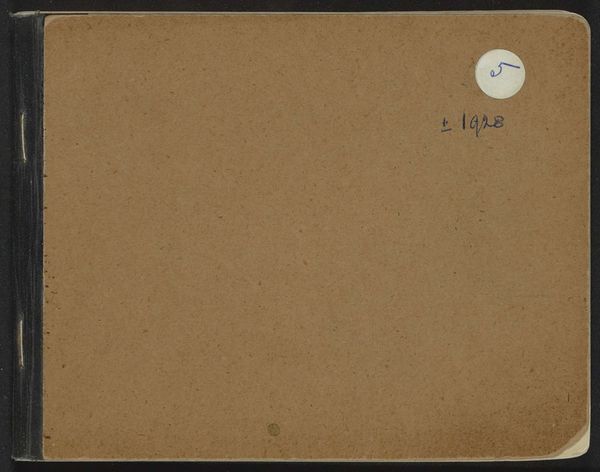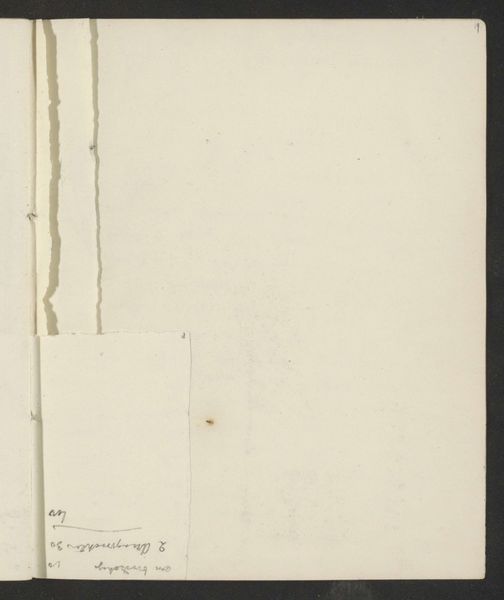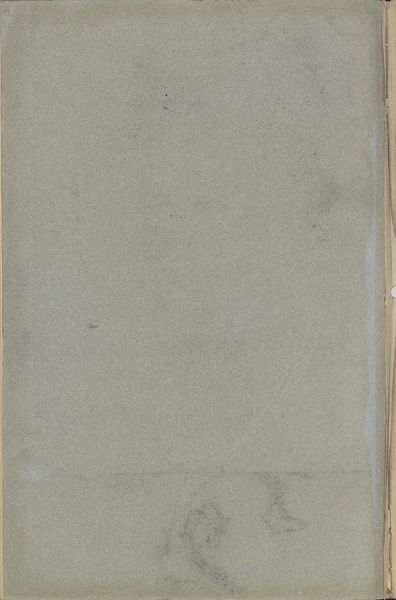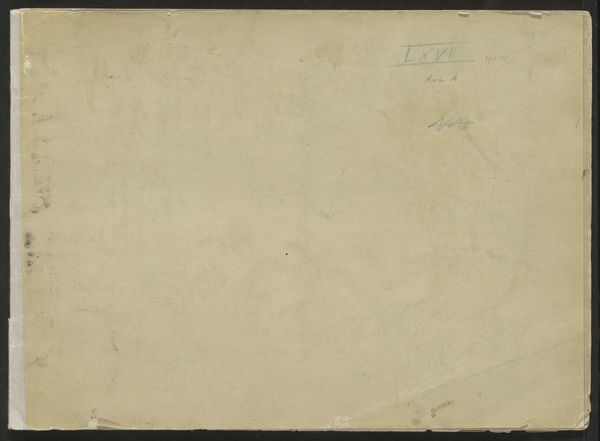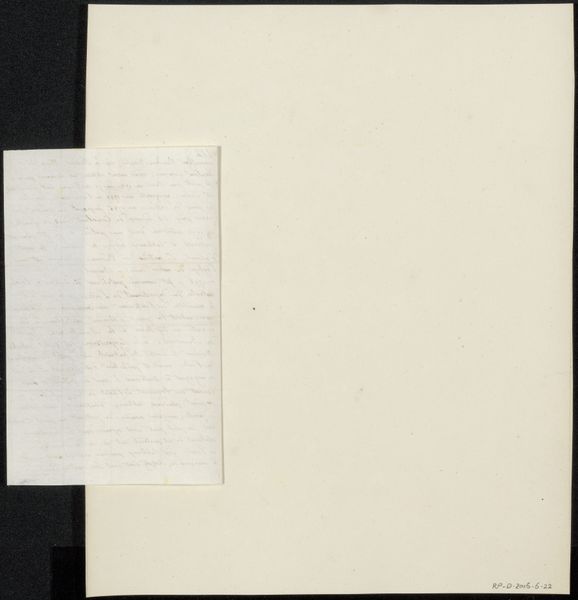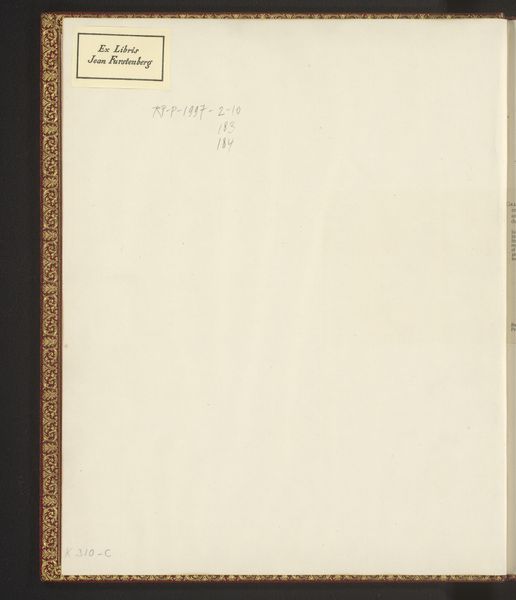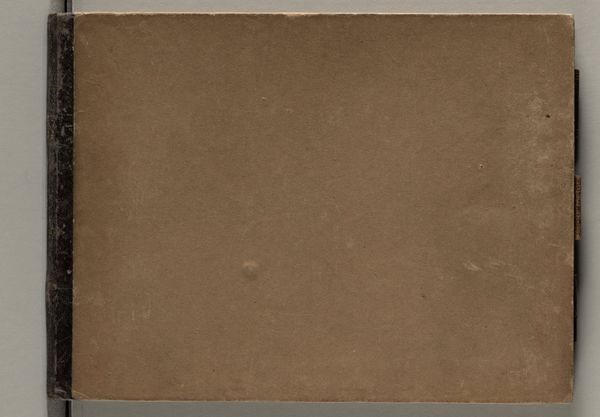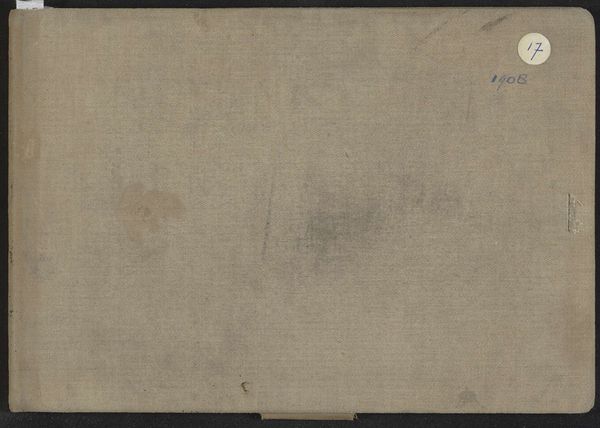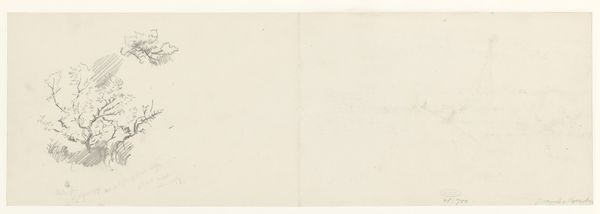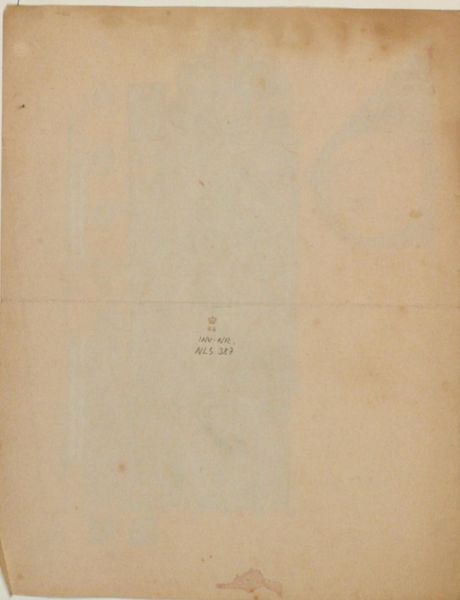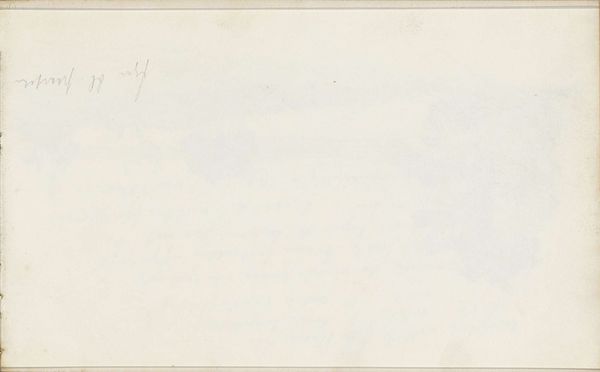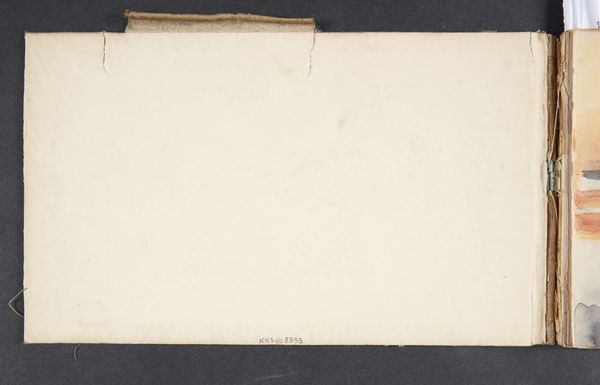
Schutblad van Stamboek van de leerlingen der Koloniale School voor Meisjes en Vrouwen te 's-Gravenhage deel II (1930-1949) Possibly 1930 - 1949
0:00
0:00
mixed-media, collage, paper
#
aged paper
#
mixed-media
#
toned paper
#
collage
#
ink paper printed
#
sketch book
#
hand drawn type
#
paper
#
personal sketchbook
#
hand-drawn typeface
#
fading type
#
sketchbook drawing
#
sketchbook art
Dimensions: height 340 mm, width 210 mm
Copyright: Rijks Museum: Open Domain
Curator: This mixed-media collage is cataloged as 'Schutblad van Stamboek van de leerlingen der Koloniale School voor Meisjes en Vrouwen te 's-Gravenhage deel II (1930-1949),' likely created between 1930 and 1949. The anonymous piece presents the cover page of a student register. Editor: It exudes such quiet solemnity; the toned paper whispers stories of another time. The vertical lines create this strong sense of order and enforced structure, almost prison-like. Curator: Precisely. We observe hand-drawn type and fading ink printed onto the paper. What fascinates me is the interplay between the formal bureaucratic purpose and the intimacy suggested by its presence within, likely, a personal sketchbook. Semiotically, the aged paper becomes an index of institutional memory. Editor: That juxtaposition really gets to the heart of it. These were young women, undoubtedly with complex lives, reduced to names and dates on a registry, as part of the project of colonialism itself. I’m particularly struck by the term ‘Koloniale School,’ Colonial School—it signals that this bureaucracy played a direct role in perpetuating historical and systemic inequity. The drawing's quietness doesn't erase its deeply troubling undercurrents. Curator: Indeed. The formal elements—the lines, the tones—underscore that controlled structure. But I’m interested in the materiality itself; the act of collaging, layering, presenting information in this format is a kind of... textural information design. Editor: I can appreciate that. Yet, from a postcolonial perspective, the entire image speaks volumes about power dynamics. It reflects how educational institutions during this period served to mold and prepare young women to participate in and uphold colonial systems. These sketchbooks give some life to them in the records. Curator: Yes. The object has a quiet power. It represents what cultural structuralists like Roland Barthes discuss—that visual culture often reflects a particular set of meanings encoded through layers of social and ideological conventions. Editor: Thank you; on one level it seems banal, but it really encourages some critical reflection. I hadn’t considered the extent to which the composition is deliberately aligned with a historical framework. Curator: Likewise; thinking more about the women that the archive represented provides a useful depth of field for understanding this time.
Comments
No comments
Be the first to comment and join the conversation on the ultimate creative platform.
